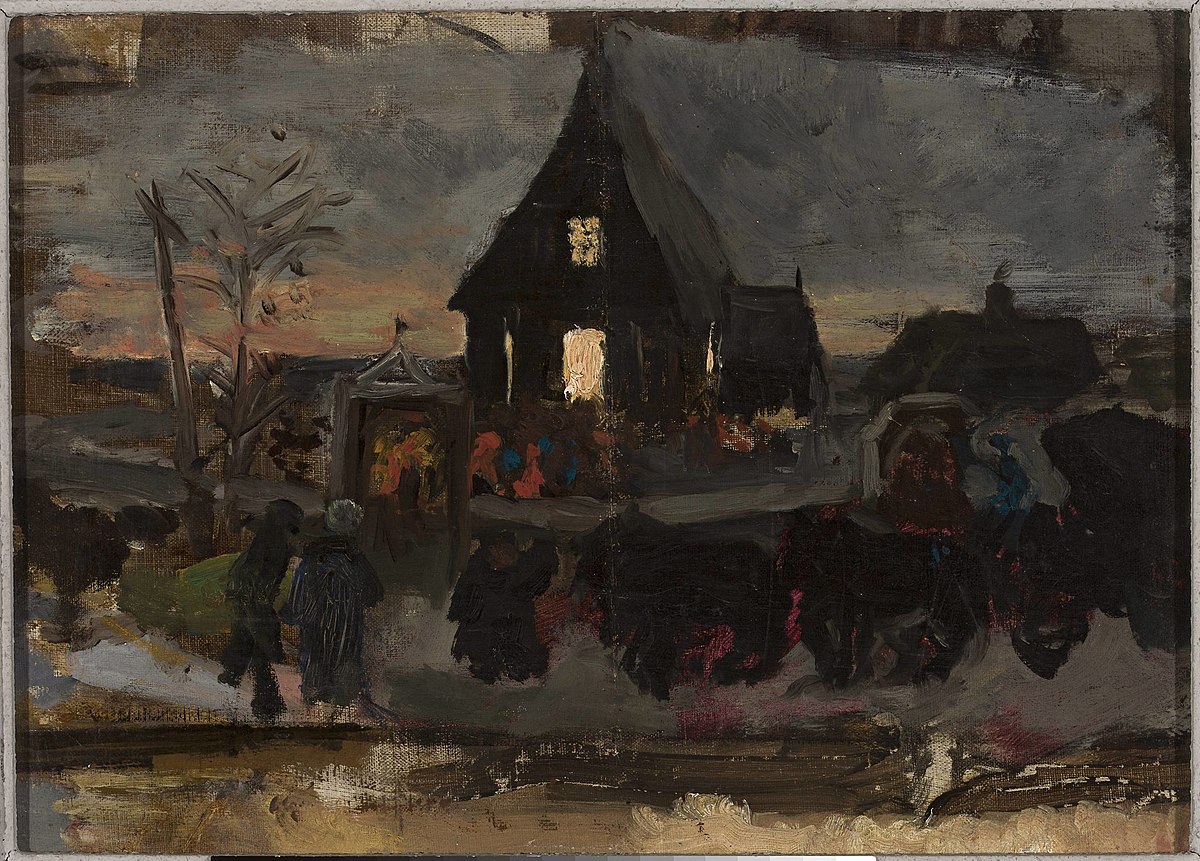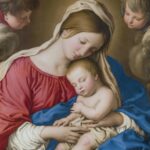Fort Smith, AR. Recently, I’ve found myself thinking a lot about sonnets. There are several reasons for this, but it strikes me that the most pressing one is the way sonnets seem to be ideally suited to the Advent season—how their form carves out space for reflection, building up tension as it works toward resolution. Traditionally, the sonnet gives at least slightly more weight to the former stage as the speaker works through some kind of problem or situation, addresses a reality that is not yet fully realized. A scene is established to prepare the way for the conclusion that will ultimately inhabit it.
My reflections on sonnets have been guided by Benjamin Myers’s book A Poetics of Orthodoxy (2020). In his chapter on form, Myers explores sonnets as a special case study for considering his larger argument for viewing poetry through the lens of the Incarnation and other key Christian doctrines. Seeing poetic form as a tool for reflecting the underlying sense of order in the world, he explains, “Orthodox Christianity insists that, although the world is often disordered by sin, there is an original, persistent, and ultimately triumphant order underlying all of God’s creation” (78). The “ultimately triumphant” resolution that we celebrate at Christmas may be an inevitable part of our world as Christians, but we still need the ordering principle of a season like Advent to help us reflect on the frequent disorder—the problems we cannot seem to wrestle our way out of or the solutions that may continually appear elusive—to guide our preparations for celebration.
I say all this as context for my recent discovery of Dunstan Thompson, a lesser-known American poet from the mid-twentieth century. The personal aspects of Thompson’s story are fascinating, especially his “re-conversion” to Catholicism that helped bring him to a fuller experience of love and peace for the second half of his life. As a convert to Catholicism myself from an evangelical tradition, I come to his work with a particular lens. In Thompson’s earlier poetry, I hear the longing for something beyond his current reality mingled with a grief that, though in some ways most directly linked to his World War II experience, also expresses a deeper spiritual loss. At times, his voice almost evokes someone like Sebastian Flyte from Brideshead Revisited, haunted by a belief from which he cannot escape even as he longs to transcend the horrors of this world through love and friendship. See, for example, the closing stanza of “Nor Mars His Sword”:
Angel of anguish, suicidal saint, Dear friend with a sunburst for a martyr’s crown, I am your passing enemy, a faint Fellow, but the broken voice is still my own. Pray, rest—the world is wide awake. In heaven, I believe, even our deaths are forgiven.
In many of these earlier poems, Thompson seeks solace in other men while mourning the ravages of war. He longs for redemption through these ill-fated relationships even while recognizing their inability to satisfy his need for life-giving love. In Thompson’s later work after returning to the Church, new layers of faith emerge. However, this is not to imply a dualistic view of his “pre-“ and “post-conversion” poetry. Instead, we can see echoes of the same longing—the waiting for redemption that is both “already” and “not yet”—as he now rests in Christ as the center of his hope. Two poems are especially relevant for addressing this shift: “San Salvador” and “Fragment for Christmas.”
In considering these poems, I’m again grateful to Myers’s observations about form. In poetry, the relationship between form and content guides readers through their experience of the poem. In other words, form can help orient us to a poem’s ideas and images by grounding them in something stable and consistent (“a shape of thought” is Myers’s phrase). Formal poetry also draws from a rich tradition that transcends the individual experience, often giving greater force to the speaker’s words by linking them to a larger poetic community. When contrasting the “Italian” with the “English” sonnet, Myers considers how one (though not the only) approach might consider how their respective underlying cultural theologies may also contribute to their formal elements: “the sudden resolution of the couplet mirroring the Protestant emphasis on salvation by grace and the more worked-out Italian sestet mirroring a Catholic cooperation of works and grace” (81). I mention this interpretation to highlight how we might view Thompson’s poems. While the English sonnet tends to trace a sequence of thought that seems primarily logical, the Italian sonnet could be seen as evoking a more experiential approach. It reminds me of the old “ABCs of Salvation” from my childhood as opposed to the continuing work toward sanctification that has resonated with me more powerfully as a new Catholic.
“San Salvador” is a conventional English sonnet reflecting on Christ as “Friend of the friendless, and the One who cares / For every lonely, frightened, desperate man.” Throughout the three quatrains, Thompson elaborates on images of Jesus as Savior, from the Good Shepherd to the Father of the Prodigal Son, before using the closing couplet to sum up “This is our God.” Although on the surface it could seem like a simple theological treatise, there are hints of what we could imagine as Thompson’s own experience in the poem. The middle quatrain, for instance, describes how Christ, “sole owner of the House he built…com[es] unexpected to the door, / Knocks, and, if answered, breaks the chain of guilt.” I hear a lot in these lines that could easily be overlooked among this litany of images if we are simply looking for an encouraging portrayal of the ways Christ saves us. In particular, Thompson’s “home” metaphor offers deep comfort. Coming from the perspective of someone who has spent time feeling without one in spiritual terms, I can understand why that vision of Jesus would resonate with Thompson’s experience of returning to the Church that had been his true home. In Advent, we celebrate Christ’s coming to the House he owns and built.
In “Fragment for Christmas,” Thompson revisits and transforms this metaphor. Technically only half of a sonnet, this brief poem forgoes the opening octave and leaves us with the resolving sestet in an Italian sonnet rhyme scheme. This seems appropriate for a Christmas poem, as Christ has come ready to begin the new story of salvation. However, Thompson manages to compress this entire story—the Nativity, the Crucifixion, and the Resurrection—into a few brief lines that reenact our ongoing rejection and acceptance of the life that Christ makes possible. The effect is a powerful one as Thompson invites us to pray along with him:
Dear Lord, and only ever faithful friend, For love of us rejected, tortured, torn— And we were there; who on the third day rose Again, and still looks after us; descend Into each wrecked unstable house; be born In us, a Child among Your former foes.
Thompson reminds us that asking for rebirth need not be a one-time decision—a theology that troubled me throughout my pre-Catholic life—but can continually transform us as we allow Christ to inhabit our “wrecked unstable house[s].” It is a view of salvation that allows for continual growth, an ongoing hope and longing, that remains not yet fully resolved in this life even as it points toward the ultimate victory that awaits us. His poetic prayer reminds me how necessary Advent is and leaves me grateful for Christ’s work that makes his former foes members of his household.






